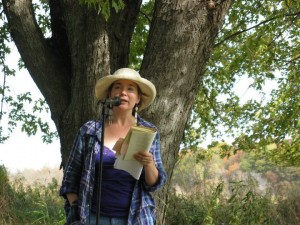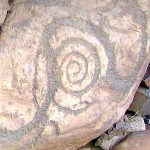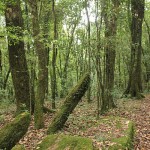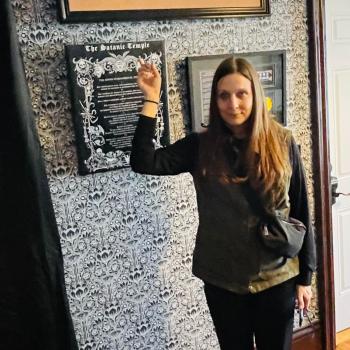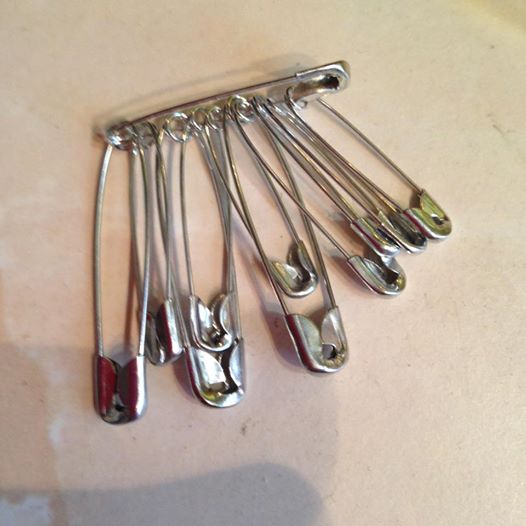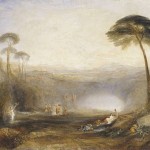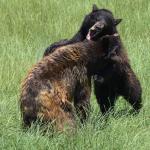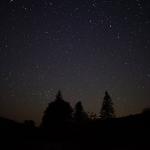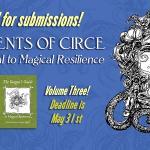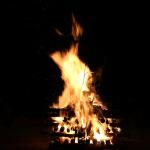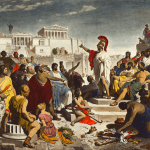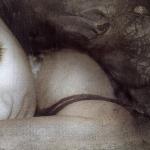“Theology, at the core, is an expression of our holiest experiences and our deepest knowing, integrated with the clarity and eloquence of the rational mind.”
Christine Hoff Kraemer, “Opening a Pagan Theological Dialogue,”
Sermons from the Mound blog, Dec. 7, ‘12
Chapter One
I have described myself as “pagan” for years without really knowing what I meant. Or what the word meant. It occurred to me recently I should maybe learn a little more. So, this past semester I went back to school and took an introductory class on Pagan Theologies at Cherry Hill Seminary, taught by Christine Hoff Kraemer. I went into the class defining myself as a loose-ish, pagan-ish follower-ish of an undefined goddess figure, and I more or less believed that all the gods and goddesses are really archetypes—representing facets of the human experience, common to us all whether or not we are aware of them.
I changed my mind pretty quick when I was approached by Wayland the Smith, a more-than-mortal figure about whom I knew nothing.
*****
The dark river unloosed.
The bright-eyed bird sought rest
in pine trees full of a broken clock
music of grackles, ditches full
of the chonk-a-ree of redwings.
It’s a birdy world, a pratfall
of lost, pit of resist, as rinky-tink
meets honky-tonk, minister
meets medicine show meets last
night in the eyes and tempest
tossed. Comical and sad,
that glottal halt, salt water
taffy and the smell of lilac.
Listen. You can’t go back.
Fallen and falling like a waterfall,
the music that cracks
the sturdy little egg of the world.
(“Autobiographies”)
Raven Kaldera, shaman, priest and author, says, “You get the god you call.” Maybe, but I think I placed the call in my sleep. So now I’m learning as much as I can about polytheism and the Norse, or Northern, as I prefer, traditions that Wayland is part of, reading books and searching websites and trying to memorize the runes. Occasionally Wayland himself chimes in, telling me what he wants or giving me advice. He can be quite specific. Recently, he asked me to keep my eye out for a ceramic grail or goblet, bone-colored.
**
No, you know that’s not it. I want a goblet made of bone.
But where on earth will I find something like that? We’re at Sears. I see a white coffee mug and pick it up.
It’s $3.49, on sale, mass produced. This is Sears. Put it down.
I look sideways at him. You’re not going to be a cheap date, are you.
You have no idea.
*****
I could be more worried about undertaking a theological life journey with a largely forgotten deity who wants to wake up again, but I’m a poet. I figure it comes with the territory.
Who am I? Why am I here? Big questions—but inserting myself into an established blog space seems to demand some account of myself. My life, like this essay, is a patchwork of prose, poetry, daily life, spiritual musings, occasional interruptions and eruptions. Intro to Pagan Theologies brought me full circle to my life twenty years ago, an undergraduate majoring in Religion. I loved every minute of the Cherry Hill class. When it ended, I grieved a little and wrote in my journal, “I need community. I need adventure. I need a way to sink my teeth into life and not let go.”
And then Christine emailed, asking if I wanted to write for Patheos.
Chapter Two
Okay, that’s a wrap. I think you’re in, kid.
But—
No buts. You can do this. I could point to poems where you already have.
Write the shadows. Write the taboos. Write me.
But—I’ll sound like I’m crazy.
Oh come on. Where’s your courage? Where’s your sense of adventure?
Right. “Fear nothing.”
Fear nothing. Including ridicule. Remember, they laughed at me.
Yes. Yes, I –I know that story.
I know you do.
Your story. Wayland, lord, I—
Enough.
*****
There’s one very, very old, relatively well-known story about Wayland from the source materials that have survived. As a writer, I can’t wait to wrestle it down onto the page in my own language. But before I tell someone else’s story, I need to be honest about my own. Who am I, then?
Self in the world is a kind of performance, an interpretive dance of at times painfully mundane movements. When I walk out my front door and wave to the neighbors, there I am: wife, mother of two, school and church and community volunteer. I have a book of poems, Somewhere Piano, published by Mayapple Press, a couple of smaller chapbooks. You can look me up any day of the week.
But that would be too simple, wouldn’t it. Shortly after Somewhere Piano was published, it became clear to me that my domestic and domesticated self had said all she had to say. She no longer held the pencil. I needed to find wilder fingers.
So, like Albus Dumbledore drawing his silver memories down into a pensieve, I turned myself inside out and drew out a new self:
Shadow, Sad Eye, Said I, Sadie
Daisy
Dicey, Doosie, Do See, Do Say, Ducet
I turned myself into a pun, a smile. A way to breathe underwater, created of shadow and possibility. I set myself dancing on the page.
*****
Career suicide, conventional wisdom argued, aghast. Changing your name midstream.
I’m exploring unconventional wisdom. It’s my hope to touch in here every once in a while, to explore the connections between poetry, myth, Wayland’s story and my own wanderings and wonderings, and how it all relates to current events, life in this twenty-first century. Just like my favorite bread-and-butter pickle recipe, the Journey is “good alone or with somebody,” but I think it’s best when shared with others.
Unconventional wisdom keeps me in motion, dancing in the spaces between Sarah and Sadie, able to change, to disappear and then reappear, eyes a slightly different color than they were. Unconventional wisdom encourages me to imagine a person can be verb instead of noun. Truth lies somewhere between fictions. I would not posit this essay as truth.
*****
A book is a basket of deaths. Small ones.
A web with no spider (hide
her), this is the secret dilation,
the interior shore, a little
lagniappe, something more,
a dance for the sake of dancing.
Verse. Reverse. Press in, be pressed
upon and disappear. Address,
redress and put your clothes on, honey.
Embrace arrest. Treat and retreat. Flight
does not equal resist. This is
the walled garden, the invitation,
an intimate penetration.
Let’s not lie or cover over.
It’s sexy as hell, what’s going on.
(“Riff on the Definition of Poem”)
*****
This is the path I’m on, maybe not quite so rational in my approach as the epigraph by Christine would suggest—more of a perceived glimmer, a scent I follow down the road, trusting peripheral vision, sideways, sidewise.
The eyes in the greenery, wild, watching, just out of reach. Meet me there.
*All poems in these entries written by Sadie Ducet unless noted otherwise. “Riff on the Definition of Poem” is included, with a whole bunch of other lovely poems by many, many poets, in the 2015 Wisconsin Poets’ calendar, which is available for sale at the Wisconsin Fellowship of Poets website.

